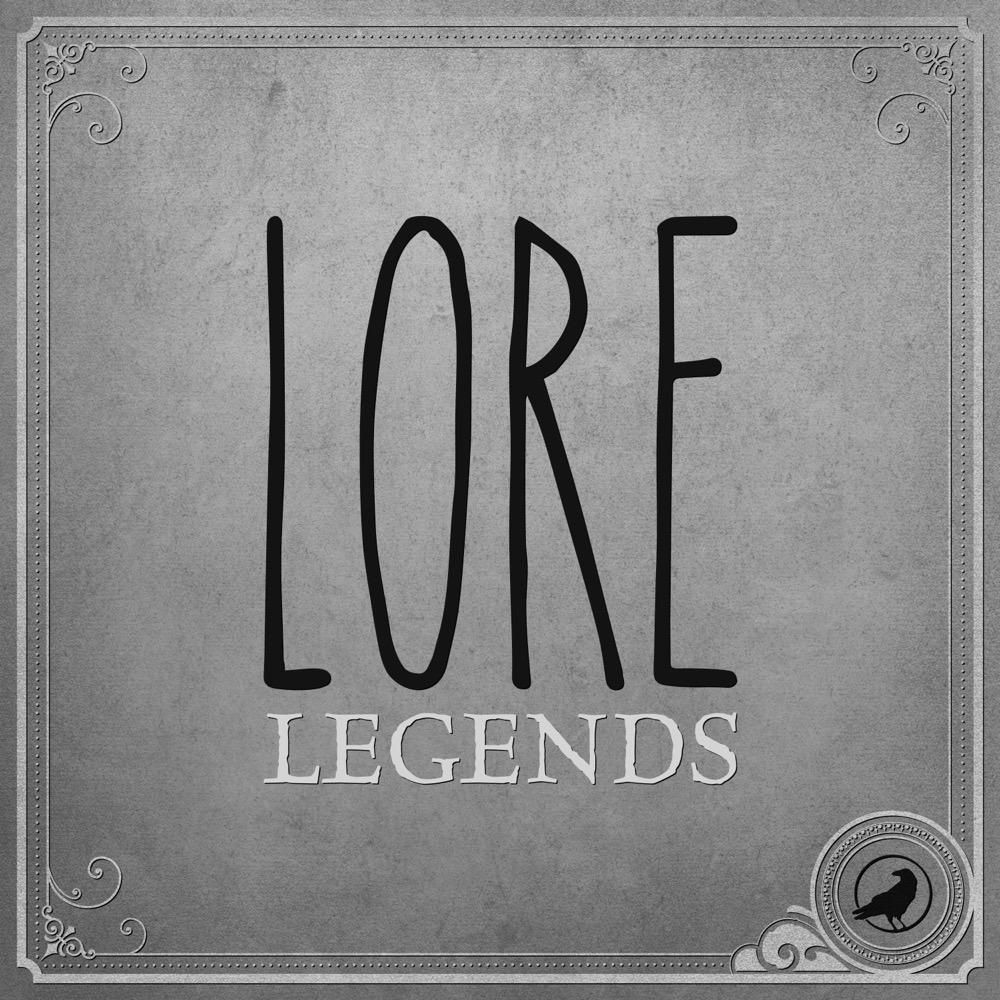Trick or Treat 4: From the Beyond
Humans have reached out to communicate with the dead for millennia, and as this collection of tales will show, that hasn’t always gone according to plan.
Narrated and produced by Aaron Mahnke, with writing and research by Alex Robinson.
—————————
Lore Resources:
- Episode Music: lorepodcast.com/music
- Episode Sources: lorepodcast.com/sources
- Official Lore Merchandise: lorepodcast.com/shop
- All the shows from Grim & Mild: www.grimandmild.com
—————————
To report a concern regarding a radio-style, non-Aaron ad in this episode, reach out to ads @ lorepodcast.com with the name of the company or organization so we can look into it.
—————————
To advertise on this podcast please email: ad-sales@libsyn.com. Or go to: https://advertising.libsyn.com/lore
—————————
©2025 Aaron Mahnke. All rights reserved.
Press play and read along
Transcript
AI agents are everywhere, automating tasks and making decisions at machine speed. But agents make mistakes.
Just one rogue agent can do big damage before you even notice. Rubrik Agent Cloud is the only platform that helps you monitor agents, set guardrails, and rewind mistakes.
So you can unleash agents, not risk. Accelerate your AI transformation at rubrik.com.
That's r-u-b-r-i-k.com. AI agents are everywhere, automating tasks and making decisions at machine speed.
But agents make mistakes.
Just one rogue agent can do big damage before you even notice. Rubrik Agent Cloud is the only platform that helps you monitor agents, set guardrails, and rewind mistakes.
So you can unleash agents, not risk. Accelerate your AI transformation at rubric.com.
That's rubric.com.
Welcome back to another edition of Trick or Treat, our way of helping you really lean into the spooky Halloween season.
Every Friday in October, you'll find another of these bonus episodes waiting for you, packed full of short stories built around a theme.
And today, we're stepping into the world of otherworldly communication.
Sure, most of the ghost stories we bump into in the dark are about visions of spectral figures, disembodied heads, and mysterious strangers dressed in old-fashioned clothing.
But mixed in among them are tales of those who have opened a line between the world of the living and the realm of the dead.
Maybe it's the feeling that some sort of rule has been broken, or that the veil between life and death might be less of a wall and more of a window. Whatever the case, these stories haunt us.
So let's explore them, shall we? Buckle up, though, because these calls are coming from inside the house. I'm Aaron Manke, and this is Lore.
On March 15th of 1853, Augustus Richard Peters died. It wasn't expected.
He was only 33 years old at the time with no known major health problems.
He had complained of a cold a few days before, and then he was gone. He left behind a wife, two children, and a very unpleasant job.
You see, Peters had been a post manager for the Hudson Bay Company, and this meant that he was in charge of trading posts in some of the coldest parts of Canada.
When he passed away, he and his family had been stationed at Fort McPherson all the way up in the Arctic Circle.
And it would seem that Peters had really hated it there because before he died, he told his wife that he didn't want his remains to stay at Fort McPherson.
But his wishes were ignored and he was buried there. Years passed by.
The world moved on. His widow even remarried his replacement, the new post manager.
And still, Augustus Peters' bones stayed at the fort. Finally, though, in 1859, his widow requested that his body be taken away.
Now, this wasn't a simple thing to ask for.
They couldn't just exhume Peters from his frozen grave and ship him off to a new city using the Ye Old Post Office. There was no real infrastructure in place.
After all, this was the most remote corner of Canada, and it was the 19th century. There was barely anything aside from ice and snow.
And so Peters had to be transported on a dog sled.
His coffin was large and definitely not made to fit on a narrow sled.
Even so, McPherson's chief trader, Charles Goodet, volunteered to load the body up with his dogs and transport it 300 miles south to Fort Good Hope. It was a slow-going ride.
The coffin was unwieldy and hard to keep on the sled, and its heavy weights made traversing the rocky terrain difficult. Eventually though, G'day made it to Good Hope.
But Peter's body wasn't done yet. He was then delivered to a man named McFarlane who would take him another 500 miles.
But McFarlane couldn't do a journey like this alone, and neither could a single group of dogs. 500 miles was a long way to have to carry something so hefty.
So, a team of two dog sleds would do the entire run together. The teams were led by two men named Michelle Thomas and Nicole Taylor.
Michelle's dogs carried the coffin while Nicole carried the supplies, and McFarlane followed the group on snowshoes. They made it over 200 miles before stopping at yet another fort for a break.
The road had been rough so far, and it would only get worse from then on out. The rest of the journey would take the men over miles upon miles of choppy ice.
It was decided that they couldn't risk having any extra extra weight on board, and so poor Peter's coffin was thrown away and his body was strapped to a dog sled.
This meant that while they were traveling, Peter's frozen body was completely exposed to the elements. In the grand scheme of things, it didn't really matter.
I mean, he was already dead.
It wasn't like he was going to complain, right? But the men had forgotten one crucial detail. Animals can smell dead meat, even if it's frozen.
The trip was uneventful for the next few days, but then on March 15th, seven years to the day since Peters had died, they reached the Mackenzie River.
And there, the men busied themselves with making camp, leaving the body with the dogs as they gathered firewood, when suddenly, the dogs started barking. That in and of itself wasn't unusual.
They could have seen a wild animal or started to wrestle with one another. So the men continued with their work, ignoring the dogs who kept on barking.
And then, as clear as day, they all heard a man's voice shout, Marsh!
Every single one of the men froze. They were in the middle of nowhere.
There shouldn't have been another living person within 100 miles. But there was no denying it.
They had all heard someone shout, and he had been talking to the dog sleds. He had been telling them to go.
McFarlane and the others searched for whoever had spoken, but they never found anyone.
It was just them, the dogs, and the body. The only odd thing they could see was that the sled dogs surrounded Peter's corpse for a while just staring at it.
But they never did anything.
And eventually the exhausted men fell asleep. Three days later, they made camp by the Mackenzie River again.
They did their usual routine of setting up camp and searching for firewood and once again they heard a man's voice call out commanding the dogs.
And finally on March 21st, the dog sled train reached their final destination, Fort Simpson.
Two days later, Peters was laid to rest in his new grave and everyone who had worked so hard to get him there could finally breathe a sigh of relief.
While they stayed at Fort Simpson, McFarlane bunked with the chief trader, a man by the name of Ross.
Ross had been a close friend of Peter's and he spent the evenings telling McFarlane all about the dead man that he had transported across the ice. And then, late into the night, it happened.
McFarlane suddenly felt Peter's presence in the room. He later said that the sensation was so strong that he had covered his face with a blanket, completely overwhelmed.
As soon as the feeling passed, Ross turned to McFarlane in excitement, asking if he had felt it too. Both of the men were in agreement.
Peter's spirit had been in the room with them.
Slowly, McFarlane came to realize that if Peters had visited them, then Peters may have been the source of the mysterious voice out in the wilderness.
The terrain around the Mackenzie River was difficult, and the dogs were exhausted by the end of each day. They were tired.
and hungry.
And right there, served up on a convenient sled was a giant hunk of meat. McFarlane came to believe without a shadow of a doubt that Peters had protected his body from the hungry sled dogs.
He had frightened them off and he had kept his corpse safe. After all, he had waited seven years to be buried in the correct spot.
He wasn't about to let a pack of dogs get in his way.
It was was getting dark, but she and her friends didn't want to go home yet. They were having such a good time.
The sunset had saturated the world in a rosy glow and the weather was perfect.
Although, considering that they lived in Hawaii, that wasn't terribly unusual. They were surrounded by the kind of beauty that could stop a grown man in his tracks.
But the girl and her friends didn't stop. Instead, they ran down the dirt road, laughing and trying to catch each other in the dying light.
Finally, it truly became too dark for them to be able to see each other. They all said their good nights and the girl began to walk home.
But then, she stopped. It was odd.
All of a sudden, she could hear the sound of drums and there, echoing over the steady beat, were chanting male voices.
With no warning, something grabbed the back of her neck and her face was shoved into the dirt. A force held her down, pressing her into the ground.
She struggled, but she couldn't get up.
No one moved to help her, but she knew that others were there. She could hear them.
A whole host host of feet marching right by her head. The pounding of their feet matched the pounding of the drums.
And then, over the sound of the chanting, someone said one word in Hawaiian, and suddenly the force holding her down disappeared. When she sat up, there was nothing there.
No footprints, no marchers, just the fading twilight and an empty road.
The girl, of course, ran home as fast as her feet would carry her, and then she finally made it through her front door and told her mother what had happened. But her mother wasn't alarmed.
She simply told her daughter that the Hawaiian word she had heard was a claim on her bloodline. That girl's ancestor had recognized her as his descendant, and in doing so, he had saved her life.
The girl never forgot about her experience, even after she grew into a successful adult. Her name was Napua Stevens, and she was one of Hawaii's most beloved stars.
Her songs were borrowed and recorded by men like Bing Crosby and Elvis Presley. She had her own cooking show.
She even guest-starred on Hawaii 5-0.
But no matter how much worldly fame she achieved, she never stopped telling people about the time that she met the Night Marchers.
Now, let's be honest, a lot of us would be thrilled to meet a ghost. After all, there's a reason that ghost hunting is such a popular pastime.
We buy into the excitement of it all, indulging in everything from walking ghost tours to ghost hunting television shows. It's mysterious, it's spooky, and it's all good fun.
But there are some ghosts that you do not want to meet, because if you do, you could lose your life. Hawaii's night marchers fall into that latter category.
They actually go by many names, Marchers of the Night, Huaka Ipoh, or the Spirit Ranks. These are the ghosts of ancient Hawaiian tribal warriors.
It's said that they come out on sacred nights when the Hawaiian gods rise from the ocean and then come to the island. Usually they appear on sacred religious sites or on old battlefields.
They materialize in full traditional battle dress, complete with spears, clubs, and drums.
The night marchers beat their drums to announce their presence, and in some legends they even blow on conch shells or flutes. Sometimes the procession is accompanied by one of the gods themselves.
If a god is present, then the spirits line up five abreast with five torches, and they march without any drums or flutes, nothing but their own voices, chanting for their god.
But a god accompanying one of these processions is not the norm. It's more common for the march to be done for a tribe's ancestral chief or to welcome a spirit of a warrior to the afterlife.
If you find yourself in Hawaii someday and you hear the drums, it would be in your best interest not to look. Close your eyes and lie face down in the dirt like Napua Stevens.
Prostrate yourself, showing deference to them. Because if they see your eyes on them or they think that you aren't showing enough respect, then they'll stab you with their spears.
And then, there will be one more spirit wandering the island that night.
Yours.
History has not been kind to Ingeborg Skjill's reputation. By all accounts, she was, as the kids might say, a girl boss.
Born as a noble woman in 16th century Denmark, she should have been meek and demure, but Ingeborg defied every gender expectation of the time.
Yes, she married a lord, but it would seem that Ingeborg was the industrious one in the relationship. She partnered with her mother to acquire a huge estate in northwest Denmark called Vogaard.
Then she embarked on a mass renovation project, expanding her new manor until it resembled a castle fit for a king. But she didn't stop there.
Ingeborg financially managed the estate herself, which involved overseeing the 300 farms on the premises.
She was involved in trade, and there are reports that she sold imported German beer at the local markets. She restored and improved multiple churches, and she even established a hospital.
In short, Ingeborg was an unconventional woman. Unfortunately, just like most unconventional women in history, she picked up a bit of a nasty reputation.
People said that she was cruel, she was greedy, and she was a hard taskmaster. Now, we don't have a lot of documentation to tell us whether she was actually a mean woman.
We only know that she had her fingers in a lot of pies and that a lot of people thought that she was unpleasant. And that is how she has been remembered.
But there may be a reason for that.
Ingeborg, you see, is the subject of a Danish folktale, and it doesn't paint her in a very flattering light.
According to the story, one day Ingeborg Skiel was riding to church with her coachman Klaus. It was the anniversary of her husband's death.
and naturally her mind wandered to her dearly departed partner. So she told Klaus that she wanted to know how her husband was doing in the afterlife.
Now, Klaus was a good coachman, but he must not have been very good at impulse control.
With a grin, he told the widow, well, my lady, it's not so easy to find out, but I'm sure he's not suffering from the cold. This infuriated Ingeborg.
She was already a mean-spirited woman and an even meaner boss, but this comment sent her over the edge.
She told her coachman that he had three weeks to bring her news about how her dead husband fared, or else she would kill him.
And Klaus knew Ingeborg well enough to know that she was telling the truth, so he tracked down a priest who could help him commune with the dead.
Together the two men went out into the woods and called on Ingeborg's husband. It didn't take long for Klaus to see his dead master rushing towards him.
The Lord Skiel drove a fiery red carriage drawn by flaming horses. He pulled to a stop in front of Klaus and demanded to know what the man wanted.
Klaus told his master that his wife wished to know how he was faring in the afterlife. The Lord laughed and then said, Tell her that I'm in hell and there's a chair in making for her.
It's finished, all but one leg, and when that is done, she will be fetched. As proof, he gave Klaus his betrothal ring and then he vanished.
Klaus brought the ring to Ingeborg and told her everything that her late husband had said. And she believed him, saying, Good, you have saved your life and I shall join my husband when I am dead.
Ingeborg Skiel died on October 17th of 1604.
Now, in reality, she probably didn't get a message from her husband before she passed on to the other world, and it's doubtful that she got a chair alongside him in hell. How do we know?
Well, because her ghost is frequently seen haunting the Vogard estate.
If you'll recall, Vogard was the manor that she renovated, but according to legend, she did much more to those halls than just choose paint swatches.
Some say that she drowned the manor's architect in the moat so that she wouldn't have to pay him.
Others say that she kidnapped the children who tried to steal from her fields and cut their fingers off. Still others say that she liked to chain people up and torture them.
So, when she died on the estate, no one was really surprised when her spirit stuck around.
Apparently, her ghost is such a constant presence that at one point one of the estate owners asked a priest to perform an exorcism.
But it doesn't seem to have worked because she's still seen hanging around. And today, the current owners wouldn't dream of chasing her off.
Far too many tourists visit Vogart in hopes of seeing Ingeborg Skiel's spirit. And yet, she still might disappear one day.
After all, she might just be biding her time until her chair is done.
I hope you've enjoyed today's tour through some haunting tales of reaching beyond the veil. But sometimes when a call comes from beyond the grave, it's not quite for the reason you'd expect.
Wires can get crossed, misunderstandings can happen, and as one last story will demonstrate, the call might not even be coming from the afterlife at all.
Stick around through this brief sponsor break to hear all about it.
AI agents are everywhere, automating tasks and making decisions at machine speed. But agents make mistakes.
Just one rogue agent can do big damage before you even notice.
Rubrik Agent Cloud is the only platform that helps you monitor agents, set guardrails, and rewind mistakes so you can unleash agents, not risk. Accelerate your AI transformation at rubrik.com.
That's r-u-b-r-i-k.com. Not all group chats are the same.
Just like not all atoms are the same.
Adam Brody, for instance, uses WhatsApp to pin messages, send events, and settle debates using polls with his friends, all in one group chat. Makes our guys night easier.
But Adam Scott grouped messages with an app that isn't WhatsApp, which means he still can't find that text from his friends about where to meet. Hang on, still scrolling.
No, the address is here somewhere. It's time for WhatsApp.
Message privately with everyone.
Introducing the new Dell AI PC, powered by the Intel Core Ultra Processor.
It helps do your busy work for you so you can fast forward through editing images, designing presentations, generating code, debugging code, summarizing meeting notes, finding files, managing your schedule, responding to Jim's long emails, leaving all the time in the world for the things you actually want to do.
No offense, Jim. Get a new Dell AI PC at dell.com/slash AI-PC.
How those ahead? Stay ahead.
The Panama Canal is one of the most deadly construction projects in history. A little over 75,000 people built the canal, and out of those 75,000 workers, over 25,000 of them died.
That means a third of the workforce lost their lives. It was basically a decades-long death trap.
Doing the math, that's 500 deaths for each mile of the canal.
Even before America got involved in the early 20th century, people were dying. In the 1880s, the French government was heading the project.
Hundreds of their laborers were crushed by equipment after an earthquake. Even more were buried in mudslides.
Flash floods swept men away, and some people's hearts gave out after working for too long in the intense heat. But the most deadly hazard of all were the mosquitoes.
In the humid Panamanian climate, those little death bombs were everywhere, and they carried some of the worst diseases known to mankind.
It's impossible to say with 100% certainty how many laborers lost their lives to illness, but we do know that over three-quarters of the French engineers succumbed to malaria, yellow fever, and dysentery.
By the time France abandoned the project, an estimated 20,000 people had already died. When America took up the mantle in 1904, they had the exact same problems as the French.
Workers were dropping like flies, and the chief engineer was so certain that he would die in Panama that he imported his own coffin.
They did what they could to kill the mosquito larvae and lessen the swarms. It helped, and by 1905, yellow fever wasn't as much of a worry as it had been.
But even without yellow fever, illness was a constant threat. In 1906 alone, an estimated 80% of the workers were hospitalized for malaria.
The highest concentration of deaths, though, came during the construction of the Calubra Cut, or as it came to be known, Hell's Gorge.
The workers were essentially trapped in a mountain pass, so they couldn't escape when death barreled towards them. Men drowned.
They were electrocuted. They were blown up by dynamite.
They were crushed by falling rocks. And most gruesome of all, some of them were even cut in half by supply trains.
Like I said, the canal project was a death trap.
So when Ella Louise Ray received a telegram on September 19th of 1912 telling her that her husband had died in a Panamanian hospital, she wasn't all too surprised.
She was devastated and heartbroken, of course, but no one who sent their loved ones down to the canal were truly surprised when they passed away.
Her husband, Edward Ray, had been hired as an iron molder back in 1908. His family had needed the money and Ray had been offered an enviable 65 cents an hour for the job.
It was an offer he couldn't refuse, and so soon enough he was on a boat from New York to Central America. Edward's experience working on the canal seems to have been just as bad as everyone else's.
His letters back home to his wife were miserable. He hated the heat and the poor working conditions.
In one message, he wrote, I wish I was home, but you know I have to earn some money before I will come home.
But only a couple of months before he was due to come back, Ella Louise got that terrible telegram, and now she had to figure out how to move on, knowing that she would never see her husband again.
Except, she did. A few weeks after she received news of Edward's death, she heard a knock at the door.
As soon as she answered, she passed out in a dead faint, because her husband was standing outside. When Ella Louise finally came to, she was hysterical.
She knew for a fact that she had just seen Edward's ghost. He looked as thin as a wraith and had been staring at her with those hollow, haunting eyes.
But she hadn't seen a ghost.
She had seen her husband. alive.
It turns out Edward never actually died. He was one of the lucky few who had escaped the clutches of the Panama Canal.
Unbeknownst to his family, his wallet had been stolen by another worker. Later, that thief passed away in the hospital and the wallet was used to identify the body.
When Ella Louise got the telegram that Edward had died, her husband had been getting onto a ship home, excited to see his family and completely clueless that everyone thought that he was dead.
Thankfully, everything was cleared up quickly. He was welcomed back home with open arms, and he lived for another 22 years.
Edward Ray finally did die in 1934.
He went peacefully in his sleep, far, far away from the Panama Canal.
This episode of Lore was produced by me, Aaron Mankey, with writing and research by Alex Robinson.
Today's collection of stories is a themed pack of lore bites, which started out life as member-only bonus episodes for our paid subscribers.
Along with weekly bites and discounts on lore merchandise and access to my inbox, our paid members also get to enjoy ad-free episodes.
It's a bargain for all of that ad-free storytelling and a great way to support this show and the talented humans who make it.
For more information about your ad-free options, head over to lorepodcast.com/slash support.
And don't forget the book series available in bookstores and online, and two seasons of the TV adaptation on Amazon Prime. Learn more over at lorepodcast.com.
And you can also follow this show on platforms like Threads, Instagram, Blue Sky, and YouTube. Just search for Lore Podcast, all one word, and then click that follow button.
And when you do, say hi.
I like it when people say hi. And as always, thanks for listening.
AI agents are everywhere, automating tasks and making decisions at machine speed. But agents make mistakes.
Just one rogue agent can do big damage before you even notice. Rubrik Agent Cloud is the only platform that helps you monitor agents, set guardrails, and rewind mistakes.
So you can unleash agents, not risk. Accelerate your AI transformation at rubric.com.
That's R-U-B-R-I-K.com. Cuandoenpezamos nuestro podcast, it is
not three amigos and a mesaplegable. Solíamos envirarles the discovery of our ditor enlisted tracer and taxi.
Ah, somos una qui pode de allse people, we have a hira mundal, filmadond documental y construid una community defense increble.
Patreon asid una parte fundamental no ayuda anosotros aquécer simperder núnca es energí original de la mesapligable. To understand more like
two podcasts, visit at patreonpump.com/slash podcastgrowth.





